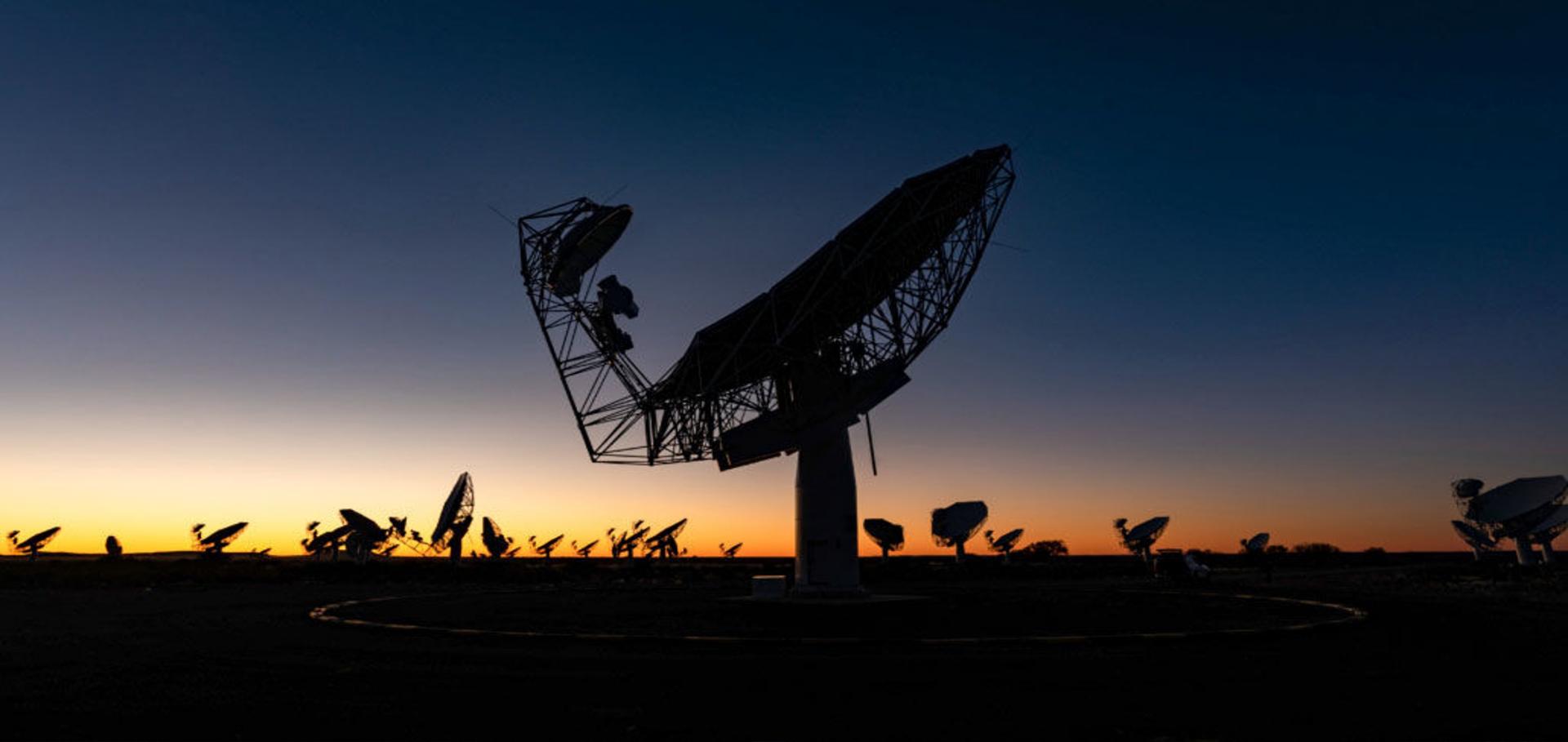EDGE – Dark matter or astrophysics? Breaking dark matter heating degeneracies with H i rotation in faint dwarf galaxies
MIGHTEE-HI: HI galaxy properties in the large scale structure environment at z ∼ 0.37 from a stacking experiment
Abstract:
We present the first measurement of HI mass of star-forming galaxies in different large scale structure environments from a blind survey at z ∼ 0.37. In particular, we carry out a spectral line stacking analysis considering 2875 spectra of colour-selected star-forming galaxies undetected in HI at 0.23 < z < 0.49 in the COSMOS field, extracted from the MIGHTEE-HI Early Science datacubes, acquired with the MeerKAT radio telescope. We stack galaxies belonging to different subsamples depending on three different definitions of large scale structure environment: local galaxy overdensity, position inside the host dark matter halo (central, satellite, or isolated), and cosmic web type (field, filament, or knot). We first stack the full star-forming galaxy sample and find a robust HI detection yielding an average galaxy HI mass of MHI = (8.12 ± 0.75) × 109 M⊙ at ∼11.8σ. Next, we investigate the different subsamples finding a negligible difference in MHI as a function of the galaxy overdensity. We report an HI excess compared to the full sample in satellite galaxies (MHI = (11.31 ± 1.22) × 109, at ∼10.2σ) and in filaments (MHI = (11.62 ± 0.90) × 109. Conversely, we report non-detections for the central and knot galaxies subsamples, which appear to be HI-deficient. We find the same qualitative results also when stacking in units of HI fraction (fHI). We conclude that the HI amount in star-forming galaxies at the studied redshifts correlates with the large scale structure environment.The discovery of a z=0.7092 OH megamaser with the MIGHTEE survey
Abstract:
We present the discovery of the most distant OH megamaser to be observed in the main lines, using data from the MeerKAT International Giga-Hertz Tiered Extragalactic Exploration (MIGHTEE) survey. At a newly measured redshift of 𝑧 = 0.7092, the system has strong emission in both the 1665 MHz (𝐿 ≈ 2500 L⊙) and 1667 MHz (𝐿 ≈ 4.5×104 L⊙) transitions, with both narrow and broad components. We interpret the broad line as a high-velocity-dispersion component of the 1667 MHz transition, with velocity 𝑣 ∼ 330 km s−1 with respect to the systemic velocity. The host galaxy has a stellar mass of 𝑀★ = 2.95 × 1010 M⊙ and a star-formation rate of SFR = 371 M⊙ yr−1 , placing it ∼ 1.5 dex above the main sequence for star-forming galaxies at this redshift, and can be classified as an ultra-luminous infrared galaxy. Alongside the optical imaging data, which exhibits evidence for a tidal tail, this suggests that the OH megamaser arises from a system that is currently undergoing a merger, which is stimulating star formation and providing the necessary conditions for pumping the OH molecule to saturation. The OHM is likely to be lensed, with a magnification factor of ∼ 2.5, and perhaps more if the maser emitting region is compact and suitably offset relative to the centroid of its host galaxy’s optical light. This discovery demonstrates that spectral line mapping with the new generation of radio interferometers may provide important information on the cosmic merger history of galaxies.MIGHTEE-H I: the MH I – M* relation over the last billion years
Abstract:
We study the MHI−M⋆ relation over the last billion years using the MIGHTEE-H i sample. We first model the upper envelope of the MHI−M⋆ relation with a Bayesian technique applied to a total number of 249 H i-selected galaxies, without binning the datasets, while taking account of the intrinsic scatter. We fit the envelope with both linear and non-linear models, and find that the non-linear model is preferred over the linear one with a measured transition stellar mass of log10 (M⋆M⊙) = 9.15±0.87, beyond which the slope flattens. This finding supports the view that the lack of H i gas is ultimately responsible for the decreasing star formation rate observed in the massive main-sequence galaxies. For spirals alone, which are biased towards the massive galaxies in our sample, the slope beyond the transition mass is shallower than for the full sample, indicative of distinct gas processes ongoing for the spirals/high-mass galaxies from other types with lower stellar masses. We then create mock catalogues for the MIGHTEE-H i detections and non-detections with two main galaxy populations of late- and early-type galaxies to measure the underlying MHI−M⋆ relation. We find that the turnover in this relation persists whether considering the two galaxy populations as a whole or separately. We note that an underlying linear relation could mimic this turnover in the observed scaling relation, but a model with a turnover is strongly preferred. Measurements on the logarithmic average of H i masses against the stellar mass are provided as a benchmark for future studies.

